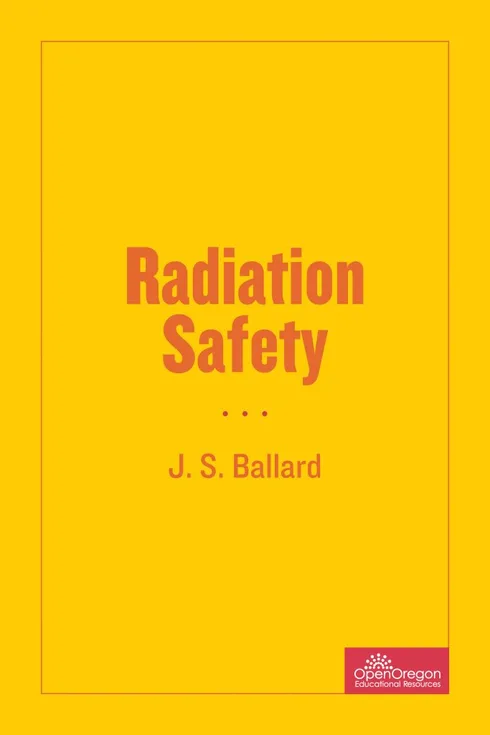
Radiation Safety
![]()
![]()
![]()
![]()
![]()
Jason S. Ballard, Linn Benton Community College
Copyright Year:
ISBN 13: 9781636350219
Publisher: Open Oregon Educational Resources
Language: English
Formats Available
Conditions of Use
![]() Attribution
Attribution
CC BY
Reviews
Reviewed by Milton Morris, Associate Professor, Benedict College on 6/29/21
This textbook is comprehensive for its intended purposes. It is designed for a specific cohort of students who are studying radiography at Linn-Benton Community College in Oregon. I found the text to contain all of the key points that I would... read more
![]()
![]()
![]()
![]()
![]()
Reviewed by Milton Morris, Associate Professor, Benedict College on 6/29/21
Comprehensiveness
This textbook is comprehensive for its intended purposes. It is designed for a specific cohort of students who are studying radiography at Linn-Benton Community College in Oregon. I found the text to contain all of the key points that I would expect to find in a book specific to the subject of health physics or radiation safety. It is comprehensive in that it logically begins with the history of radiation by discussing the life and careers of some of the key early researcher in radiation. Some of the key radioisotopes are discussed and highlighted. However a less random discussion of those isotopes may provide better clarity to some students. The text does a credible job in discussing health issues associated with radiation exposure. It also examines the mathematical calculations that are used by health physicists in analyzing radiation. As an additional benefit to Hispanic students whose primary language is not English, the book offers many components in Spanish.
Content Accuracy
This text is accurate in its content and much of the information is supported graphically with charts, figures, tables, etc., which one would expect to find in any good text to assist in assuring its accuracy.
Relevance/Longevity
Although this text is designed specifically for students of radiography at a specific college, its content could be transferrable to other universities or academic institutions that offer a course in health physics or radiation safety. The content is up to date and does not depict information that should become obsolete at any time within the near future.
Clarity
The book is clearly written as designed for specific students. It offers tests and exercises to assess student progress as a method of helping ensure that the content is clear to the intended readers. Technical terminology is discussed sufficiently for readers to get a basic understanding of otherwise esoteric terms.
Consistency
The internal consistency of the text is apparent. It did not display any noted contradictions of information that would have cause significant concern to astute readers.
Modularity
The text is designed sufficiently to afford reading without issues of modularity. The text is subdivided well and does not get off onto tangents that would make it more difficult to follow its content or its logic.
Organization/Structure/Flow
The topics are logically presented and include information that logically should come first such as historical content. The discussion of types of radioisotopes and their impacts on materials and people logically follows within the text.
Interface
Interfacing contents that may have been problematic were not in evidence within the text.
Grammatical Errors
The grammar within the text was correct, as indicated for the English content. No apparent grammatical errors were noted.
Cultural Relevance
The text is apparently not culturally insensitive and is relevant and usable by readers of different cultures. Admittedly with a broad range of cultures and ethnicities that may use the text, it is a great challenge to ensure its usability among a broad range of culture.
CommentsAs a reviewer who previously provided a summer workshop in radiation safety, I would definitely use this book as one of the references for the workshop. Although it would not necessarily be the principal textbook, it would certainly serve as a good resource text. As a text for a very specific subdivision or occupation in radiation safety, the text meets that objective.
Table of Contents
- Unit 1: History of Radiation Safety
- Unit 2: Ionizing Radiation & Units of Measurement
- Unit 3: Basic Atomic Theory & Science
- Unit 4: Radiation Types & Midterm Review
- Unit 5: Activity, Half Life, & Half Value Layers
- Unit 6: X-ray
- Unit 7: Biological Effects
- Unit 8: More Biological Effects of Radiation
- Unit 9: Caution Signage and Detection Devices
About the Book
The purpose of this OER is to provide students with a comprehensive textbook aligned with the NDT 130 (Radiographic Testing) course as taught at Linn-Benton Community College.
About the Contributors
Author
Jason S. Ballard earned his Associate of Applied Science Degree in Metallurgy from LBCC in 1991 and went on to earn his BS and Masters in Education from Western Oregon University. Jason spent over 20 years as a high school manufacturing instructor before taking a positon with LBCC in 2016 as a full time NDT instructor. Tasked with building a new NDT program and developing a progressive curriculum, Oregon OER was a perfect fit. As the primary author of the Radiation Safety OER, Jason brought together an outstanding team to assist in the work.
